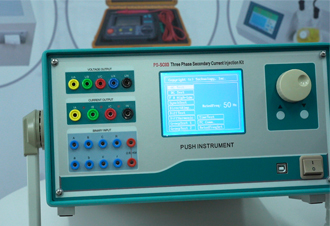 English
English



-
 Afrikaans
Afrikaans -
 Albanian
Albanian -
 Amharic
Amharic -
 Arabic
Arabic -
 Armenian
Armenian -
 Azerbaijani
Azerbaijani -
 Basque
Basque -
 Belarusian
Belarusian -
 Bengali
Bengali -
 Bosnian
Bosnian -
 Bulgarian
Bulgarian -
 Catalan
Catalan -
 Cebuano
Cebuano -
 China
China -
 China (Taiwan)
China (Taiwan) -
 Corsican
Corsican -
 Croatian
Croatian -
 Czech
Czech -
 Danish
Danish -
 Dutch
Dutch -
 English
English -
 Esperanto
Esperanto -
 Estonian
Estonian -
 Finnish
Finnish -
 French
French -
 Frisian
Frisian -
 Galician
Galician -
 Georgian
Georgian -
 German
German -
 Greek
Greek -
 Gujarati
Gujarati -
 Haitian Creole
Haitian Creole -
 hausa
hausa -
 hawaiian
hawaiian -
 Hebrew
Hebrew -
 Hindi
Hindi -
 Miao
Miao -
 Hungarian
Hungarian -
 Icelandic
Icelandic -
 igbo
igbo -
 Indonesian
Indonesian -
 irish
irish -
 Italian
Italian -
 Japanese
Japanese -
 Javanese
Javanese -
 Kannada
Kannada -
 kazakh
kazakh -
 Khmer
Khmer -
 Rwandese
Rwandese -
 Korean
Korean -
 Kurdish
Kurdish -
 Kyrgyz
Kyrgyz -
 Lao
Lao -
 Latin
Latin -
 Latvian
Latvian -
 Lithuanian
Lithuanian -
 Luxembourgish
Luxembourgish -
 Macedonian
Macedonian -
 Malgashi
Malgashi -
 Malay
Malay -
 Malayalam
Malayalam -
 Maltese
Maltese -
 Maori
Maori -
 Marathi
Marathi -
 Mongolian
Mongolian -
 Myanmar
Myanmar -
 Nepali
Nepali -
 Norwegian
Norwegian -
 Norwegian
Norwegian -
 Occitan
Occitan -
 Pashto
Pashto -
 Persian
Persian -
 Polish
Polish -
 Portuguese
Portuguese -
 Punjabi
Punjabi -
 Romanian
Romanian -
 Russian
Russian -
 Samoan
Samoan -
 Scottish Gaelic
Scottish Gaelic -
 Serbian
Serbian -
 Sesotho
Sesotho -
 Shona
Shona -
 Sindhi
Sindhi -
 Sinhala
Sinhala -
 Slovak
Slovak -
 Slovenian
Slovenian -
 Somali
Somali -
 Spanish
Spanish -
 Sundanese
Sundanese -
 Swahili
Swahili -
 Swedish
Swedish -
 Tagalog
Tagalog -
 Tajik
Tajik -
 Tamil
Tamil -
 Tatar
Tatar -
 Telugu
Telugu -
 Thai
Thai -
 Turkish
Turkish -
 Turkmen
Turkmen -
 Ukrainian
Ukrainian -
 Urdu
Urdu -
 Uighur
Uighur -
 Uzbek
Uzbek -
 Vietnamese
Vietnamese -
 Welsh
Welsh -
 Bantu
Bantu -
 Yiddish
Yiddish -
 Yoruba
Yoruba -
 Zulu
Zulu
check transformer with multimeter
Checking a Transformer with a Multimeter
Transformers are vital components in electrical systems, playing a crucial role in voltage conversion. Whether used in power distribution, audio equipment, or other electronics, ensuring their functionality is essential for reliable operation. A multimeter can be an invaluable tool in checking transformers, helping to diagnose faults and verify proper operation.
Understanding Transformers
Before diving into the testing process, it is essential to understand the basic operation of a transformer. Transformers work on the principle of electromagnetic induction, consisting of primary and secondary windings around a magnetic core. Input voltage applied to the primary winding generates a magnetic field that induces a corresponding voltage in the secondary winding. The transformer’s effectiveness relies on its turns ratio, which determines how voltage is altered from the primary to the secondary side.
Tools Required
To check a transformer, you will primarily need a multimeter, which can measure AC voltage, resistance (ohms), and continuity. A basic digital multimeter suffices for most transformer checks. Ensure that it has a sufficient voltage range to accommodate the transformer’s specifications.
Testing Procedure
1. Safety First Before beginning any tests, ensure the transformer is disconnected from any power source to prevent electric shock or damage to the multimeter.
check transformer with multimeter

2. Visual Inspection Conduct a thorough visual inspection of the transformer. Look for signs of physical damage, such as burnt areas, loose connections, or signs of overheating. These can indicate potential issues that will affect the transformer’s performance.
3. Resistance Check Set your multimeter to the resistance (ohm) setting. Check the primary winding by placing the probes on the primary terminals. A low resistance reading generally indicates that the winding is intact. Repeat the process for the secondary winding. An infinite resistance may indicate a broken coil. Most transformers should have a resistance reading in the kilo-ohm range, but specifics can vary based on the transformer type.
4. Continuity Check Keeping the multimeter in the ohms setting, perform a continuity test between the terminals of each winding. A beep or a low resistance reading indicates continuity, while no sound or infinite resistance implies a fault in the winding.
5. Voltage Testing (if applicable) If the transformer operates at low voltage and is safe to test live, restore power and measure the voltage output from the secondary winding while applying the rated voltage to the primary winding. Use the AC voltage setting on your multimeter. The output voltage should align with the transformer’s specifications.
6. Compare Readings Compare your resistance and voltage readings with the manufacturer’s specifications. Any significant deviations could indicate a malfunction or impending failure.
Conclusion
Using a multimeter to check a transformer is a straightforward yet effective procedure for maintaining electrical equipment. Regular testing can help identify issues early, ensuring that transformers operate efficiently and preventing potential failures in the broader electrical system. Always adhere to safety precautions and consult with a professional electrician when dealing with complex systems or if uncertain about the testing process. Understanding how to utilize a multimeter not only boosts your confidence in handling electrical components but also enhances your skills in troubleshooting and maintaining your devices.
-
Testing Equipment Industry Sees Major Advancements in 2025: Smart & Precision Technologies Lead the WayNewsJun.06,2025
-
Applications of Direct Current Generators in Renewable Energy SystemsNewsJun.05,2025
-
Hipot Tester Calibration and Accuracy GuidelinesNewsJun.05,2025
-
Digital Circuit Breaker Analyzer Features and BenefitsNewsJun.05,2025
-
Benefits of Real-Time Power Quality Monitoring Devices for Industrial EfficiencyNewsJun.05,2025
-
Earth Fault Loop Testing in High-Rise Building Electrical SystemsNewsJun.05,2025



